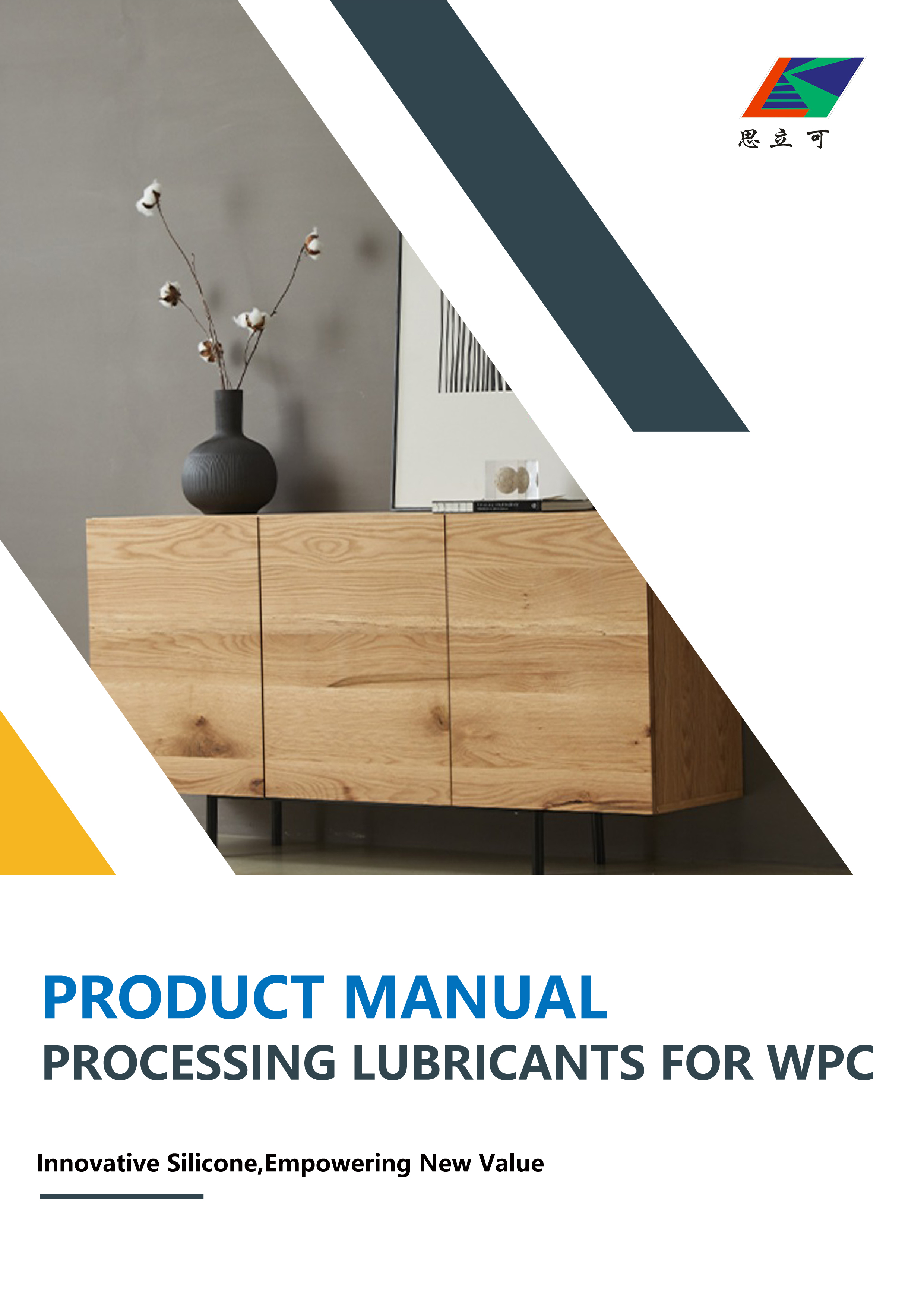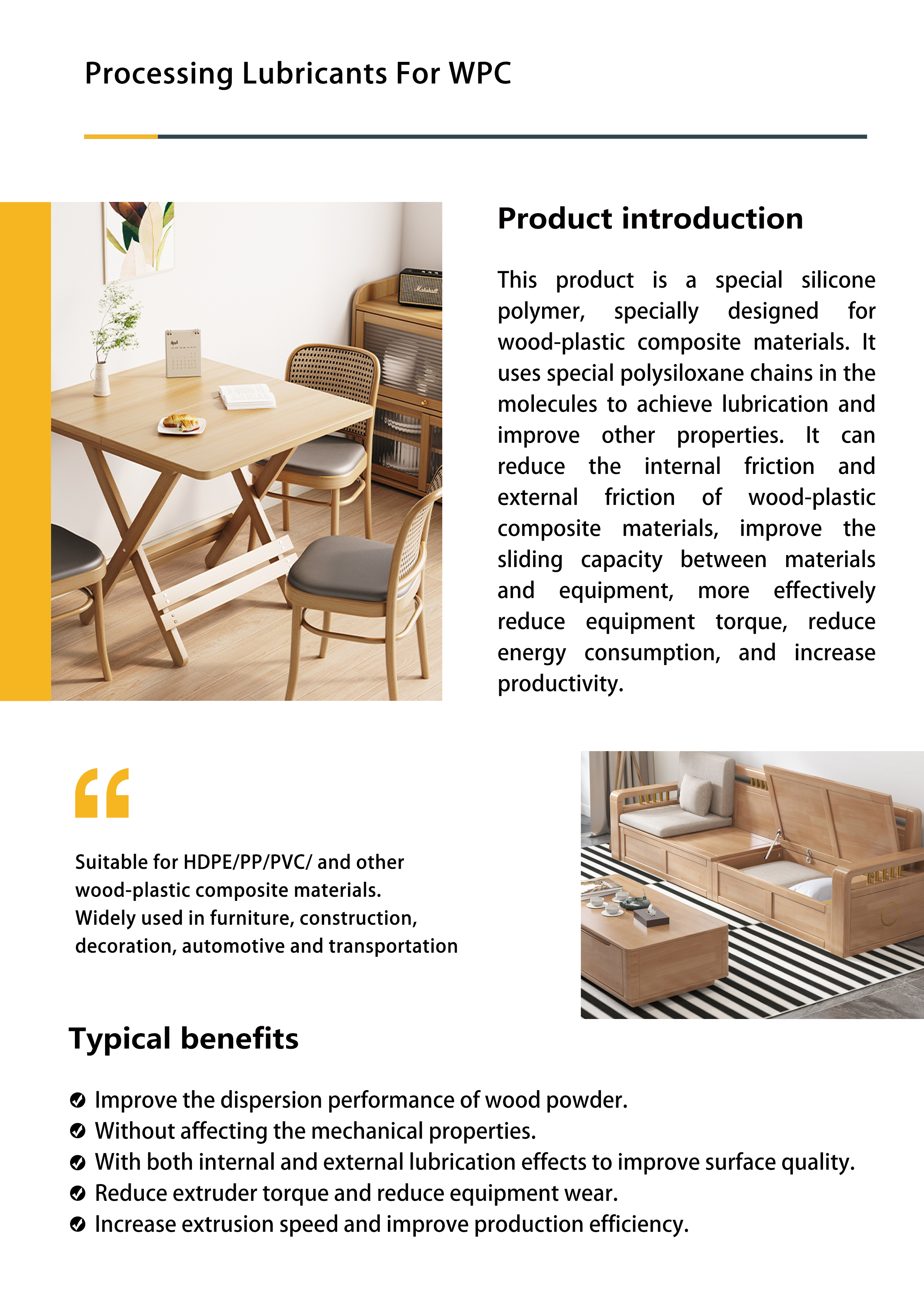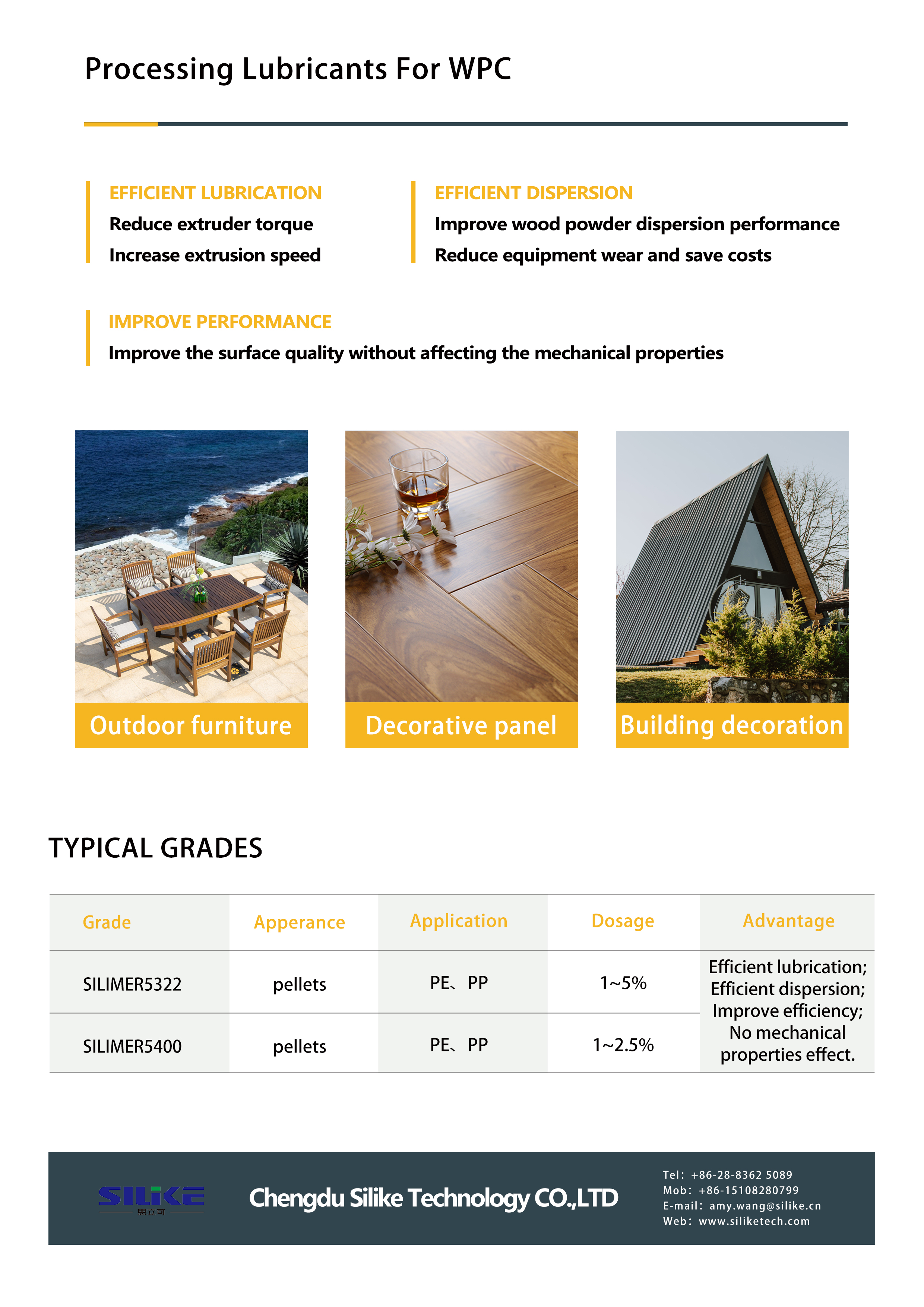The correct choice of additives is a key factor both in the enhancement of the inherent properties of wood-plastic composites(WPCs) and in the improvement of processing properties. Problems of warping, cracking, and staining sometimes appear on the surface of the material, and this is where additives can help. In the extrusion line of WPCs, additives are needed to obtain the right extrusion speed and a smooth surface to avoid edge cracking.
Among the various additives selected, lubricants, cross-linking agents, antioxidants, light stabilizers, and anti-mold/anti-bacterial agents have the greatest impact on the quality of wood-plastic composites. As for the special additives for wood-plastic composites, different matrix resins need to develop special additives to meet the requirements of composite product performance or processing performance, however, there is a wide range of additives for wood-plastic composites, and the selection of the correct additives is crucial for the production of wood-plastic composites.
The Role of Additives in Wood-Plastic Composites: Types and Benefits
Crosslinking agent
Crosslinking agents bond wood fibers and matrix resin together, improving the flexural strength and rigidity of the composite material, as well as improving the modulus of resistance to cracking and the modulus of elasticity. Crosslinking agents also improve the dimensional stability of the material, the impact strength, the light scattering properties, and the reduction of creep, which is very important for products such as balustrades, stair railings, and guardrails. For plastic wood composites used in decorative materials, the main role of the crosslinking agent is to reduce the water absorption of the material, which can avoid the occurrence of stress cracking caused by the expansion of wood fibers due to water absorption.
Antioxidant
For plastic wood products, the traditional main antioxidant selection is BHT and 1010 two categories. BHT price is slightly lower, the later heat-resistant oxidation effect is good, but BHT itself after oxidation combined, will form DTNP, the structure itself is a yellow pigment, on the product of colored stains, so the application is not widespread. 1010 not only in plastic wood products but in the whole polymer industry chain has a wide range of applications and is also the world’s largest and most widely used main antioxidant.
Anti-mould/anti-bacterial agents
At present, wood plastic anti-mold and antimicrobial agents a class of boron and zinc mixed salt, the product of mold and wood-rotting bacteria have a certain inhibitory ability, but also has good thermal stability and UV stability, join can also improve the flame retardant properties of the material, but the product additive amount is high, high cost of addition, and the mechanical properties of the plastic wood products have a bad influence; another class is the arsenic-containing organic compounds, the composition of the plastics are widely used. With a small amount of additives, mold resistance, and other characteristics, but because the substance contains arsenic, not up to REACH and ROSH certification, so plastic wood producers also use less.
Lubricants can improve the surface properties of plasticized wood composites and increase productivity. Typical lubricants used in plastic wood composites are ethylene bisceramide (EBS), zinc stearate, paraffin wax, oxidized polyethylene, etc. EBS and zinc stearate are widely used in HDPE-based plastic wood composites, but since the presence of stearate weakens the cross-linking effect of maleic anhydride, the efficiency of both cross-linking agents and lubricants decreases. Therefore, more new types of lubricants are still being developed.
Efficiency Meets Sustainability: High-Efficiency Lubricants for Eco-Friendly WPC!
To address the plight of the wood-plastic composites lubricant market, SILIKE has developed a series of special lubricants for wood-plastic composites(WPCs)
This product is a special silicone polymer, specially designed for wood-plastic composite materials. It uses special polysiloxane chains in the molecules to achieve lubrication and improve other properties. It can reduce the internal friction and external friction of wood-plastic composite materials, improve the sliding capacity between materials and equipment, more effectively reduce equipment torque, reduce energy consumption, and increase productivity.
Highlight of SILIKE’s lubricant for wood-plastic composites, compared to organic additives like stearates or PE waxes, throughput can be increased, Maintain good mechanical properties.
Open a green solutions for HDPE/PP/PVC/ and other wood-plastic composites. Widely used in furniture, construction, decoration, automotive, and transportation industries.
Typical benefits:
1) Improve processing, reduce extruder torque, and improve filler dispersion;
2) Reduce internal and external friction, reduce energy consumption, and increase production efficiency;
3) Good compatibility with wood powder, does not affect the forces between the molecules of the wood plastic
composite and maintains the mechanical properties of the substrate itself;
4) Reduce the amount of compatibilizer, reduce product defects, and improve the appearance of wood plastic products;
5) No precipitation after boiling test, keep long-term smoothness.
Below is a brochure of SILIKE’s lubricant products for wood-plastic composites that you can browse through, and if you need wood-plastic lubricants, Elevate Your Wood-Plastic Composite Production,Redefining Quality! SILIKE welcomes your inquiry!
Post time: Nov-01-2023








